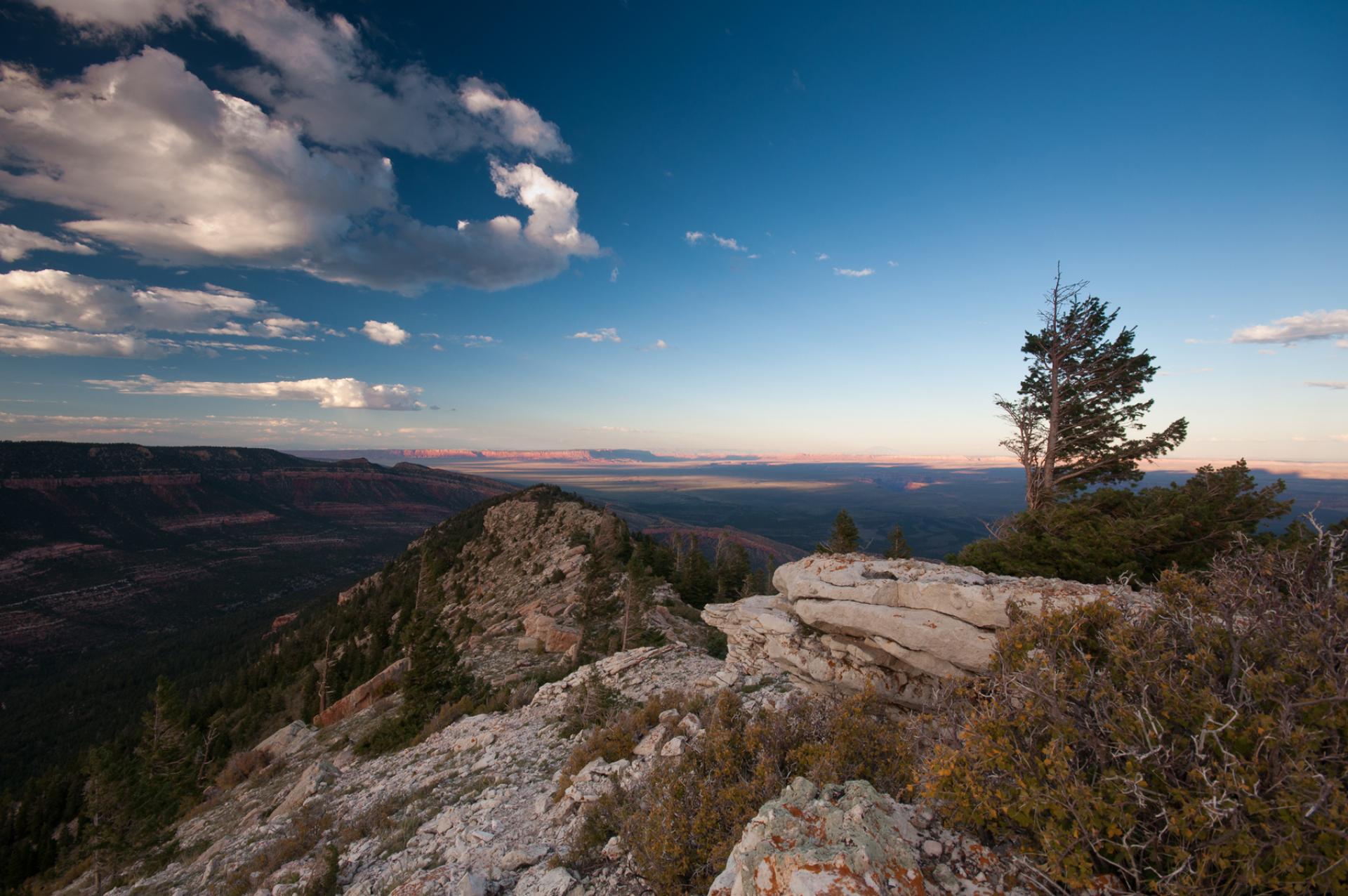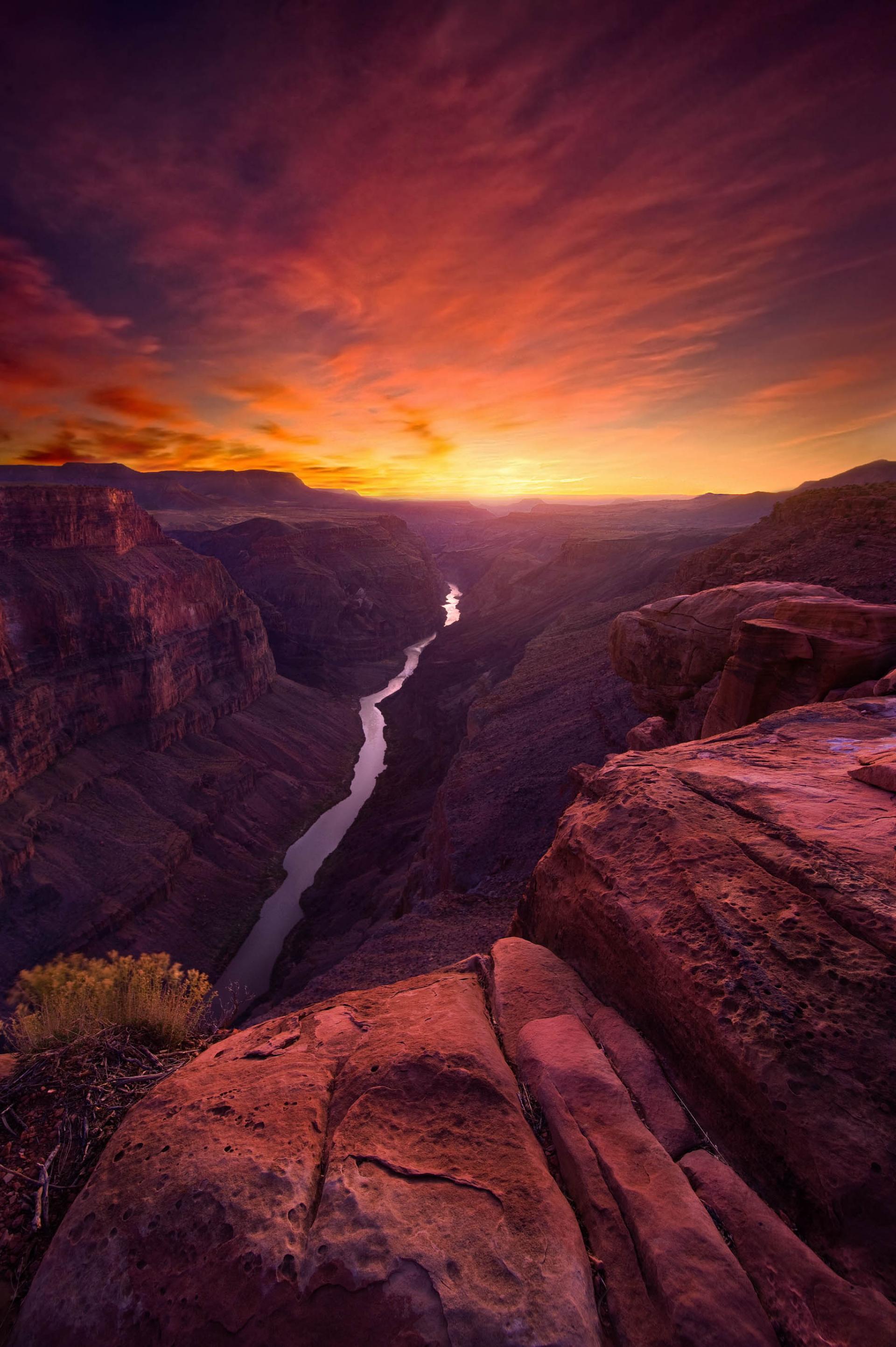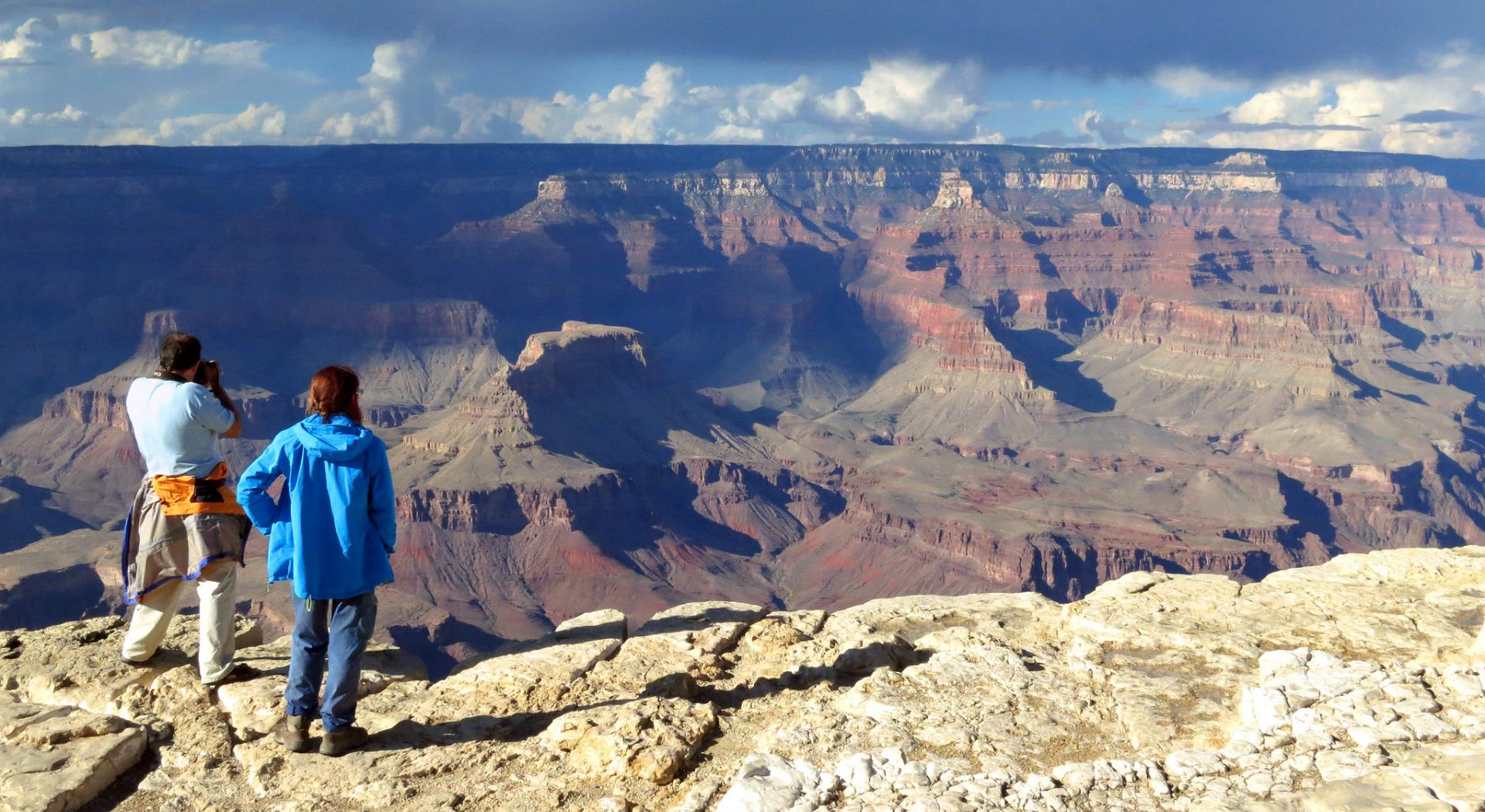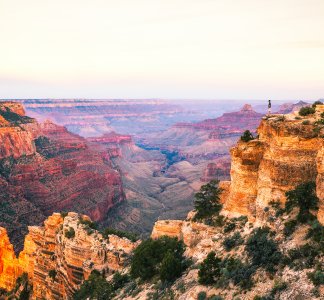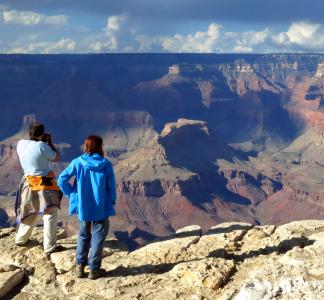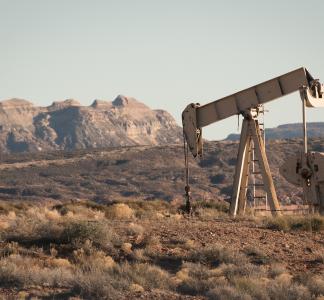Mining next to the Grand Canyon? Yes, if the Trump administration has its way...
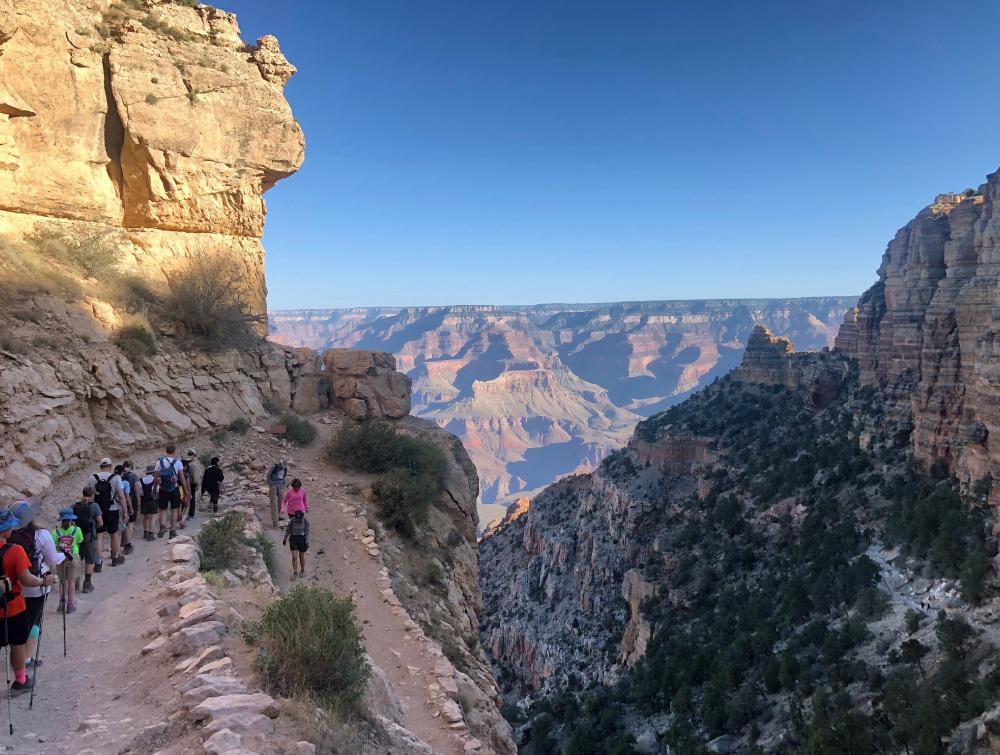
Hikers on a trail near the Grand Canyon
National Park Service, Flickr
Recommendation would re-open more than 1 million acres
The Department of Agriculture wants to open the greater Grand Canyon area to new uranium mining operations by revising an Obama-era decision.
The U.S. Department of Agriculture has recommended re-opening more than 1 million acres of land adjacent to the Grand Canyon for uranium mining, revising a 2012 Obama administration order, amid other proposals to roll back environmental rules.
The new recommendations could turn iconic places like the Grand Canyon into industrial zones and put drinking water at risk for millions of people
“The holidays have come early and often for the oil, gas and mining industry since Donald Trump took office," said Wilderness Society Forest Planning and Policy Director Vera Smith in a statement. "The Forest Service’s recommendations will turn iconic places like the Grand Canyon into industrial zones and put drinking water at risk for 66 million people across the country."
The old order banned new mining claims across much of Grand Canyon National Park’s watershed until at least the year 2032, citing the negative effects of mineral extraction. A federal judge in Arizona subsequently upheld that decision. In proposing significant changes to it, the Trump administration is extending a chain of actions that emphasizes development and commercial exploitation of public lands, to the detriment of the Americans who enjoy them.
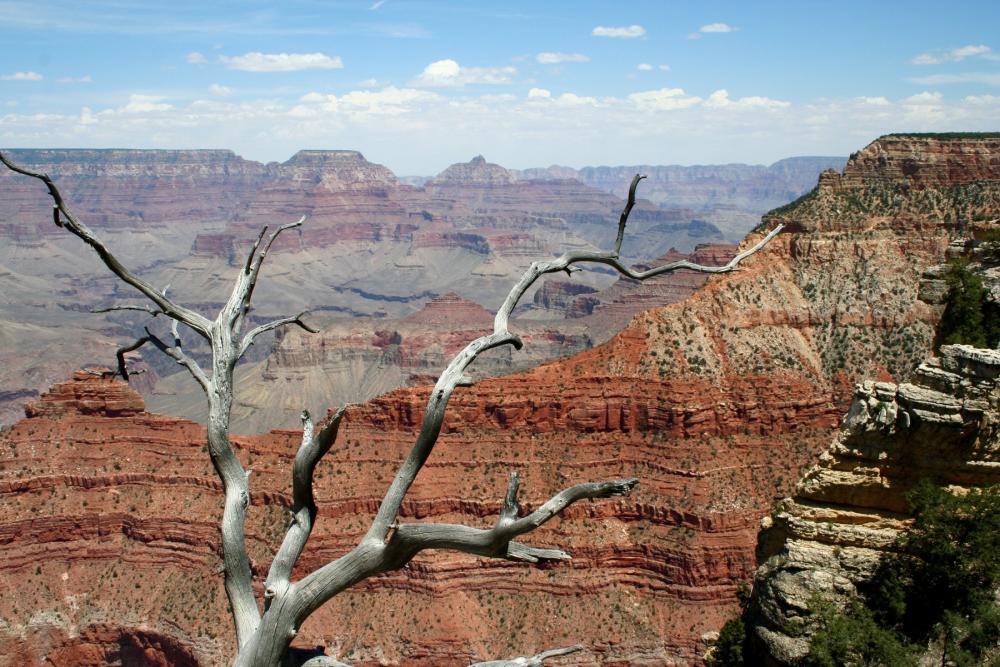
Grand Canyon, Arizona
Alan Levine
The Obama-era protections must be kept in place to preserve this priceless landscape. If the Trump administration does act on the new recommendation, it must conduct a full public and environmental review process to analyze the impacts of reducing or eliminating protections.
For years, mining companies extracted uranium from lands just a few miles from the Grand Canyon itself. Evidence suggests that some nearby waterways have already been contaminated by that activity, posing a toxic risk to drinking water. The 2012 order, which was supported by Havasupai, Hualapai, Kaibab-Paiute, Navajo and Hopi leaders, was intended to forestall such dangers from future mining projects.
In addition to potentially irreversibly tainting the Grand Canyon watershed's aquifers, new uranium mining projects near the Grand Canyon would industrialize the iconic wildlands flanking the park, introducing exploratory drilling, new roads, power lines and increased traffic.
Area around Grand Canyon is culturally significant for tribes, a natural gem
As in Grand Canyon National Park itself, the lands around the canyon first hosted humans thousands of years ago and still bear the cultural traces of those indigenous Americans. Thousands of Native American archaeological sites have been recorded in the area, some dating back to the Paleo-Indian period.
The greater Grand Canyon is a significant cultural site for many tribes. Rep. Raul Grijalva introduced legislation in 2015 to protect the land that incorporated input from Havasupai, Hualapai, Hopi, Navajo, Zuni, Paiute and Yavapai leaders.
In addition to its cultural significance, the greater Grand Canyon region is an incredible landscape that exemplifies the wild American West, ranging from arid and geologically stunning deserts to the Pinyon-juniper, Ponderosa pine, mixed conifer and aspen woodlands of Kaibab National Forest (large tracts of which would be included within the area proposed for new protection).
These picturesque ecosystems provide habitat for a variety of wildlife, including Kaibab squirrels, herds of mule deer, mountain lions and even the endangered California condor.
Seekers of outdoor recreation thrills make good use of this gorgeous area, too, converging to hike, bike, ride horses, camp, fish and more. Over 100,000 acres of the Kaibab is designated as federal wilderness, with several challenging hiking trails offering access to visitors.
Unsurprisingly, outdoor recreation is an important economic driver for the region. In Arizona alone, outdoor recreation generates about $10.6 billion in consumer spending every year, directly supporting nearly 104,000 jobs.
Since the Trump administration has relentlessly (and speciously) cited local concerns in justifying its various anti-conservation actions, it might want to note that Arizonans like the land around the Grand Canyon just the way it is. In fact, in a 2016 survey, most registered Arizona voters said they think that more should be done to protect the greater Grand Canyon region’s land, air and water.
Until we learn more about the administration's next move, people who value the Grand Canyon and its surrounding lands should call their members of Congress and ask them to speak up for continued protection of this American treasure.
Rep. Raúl Grijalva proposes permanent protection for Grand Canyon region threatened by uranium mining
Michael Matti, Flickr
Opening the Grand Canyon area to uranium mining is a horrible idea
Michael Quinn, National Park Service.
Trump & Congress let polluters dictate where drilling, mining happens
Mason Cummings, The Wilderness Society
